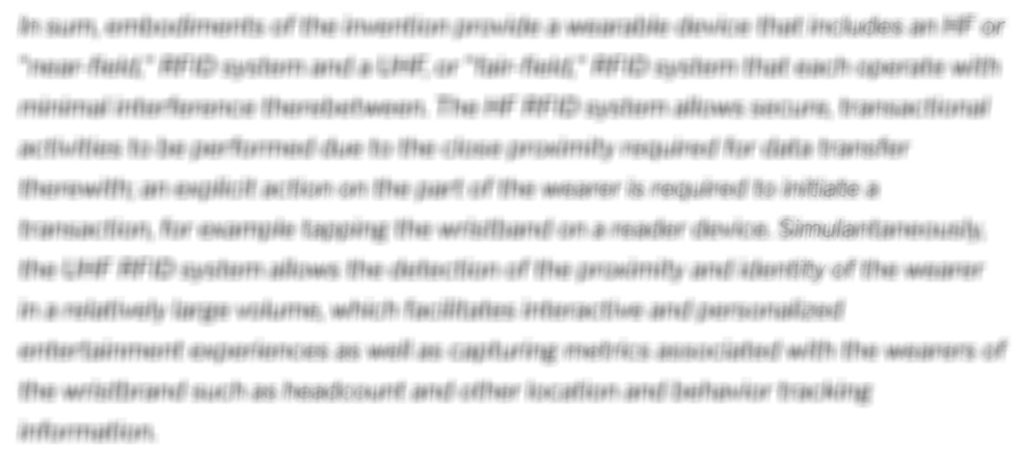Technology
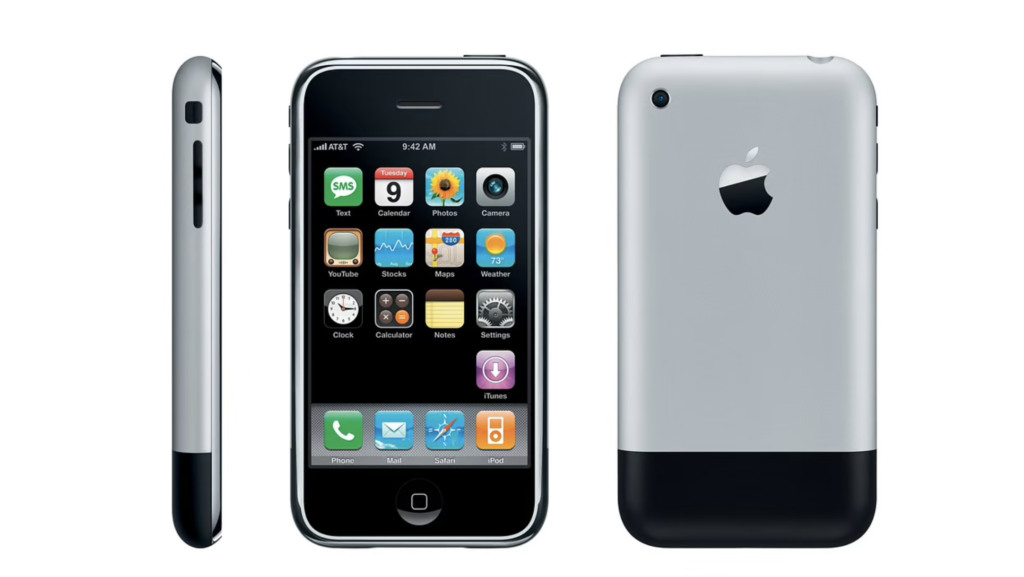
Though it may not seem long ago to you and I, consider just how different our world was when the “Fab Five” sat down together in February 2008 to reimagine Walt Disney World. For one thing, the iPhone was less than a year old. The App Store wouldn’t exist until later that summer, when the iPhone 3G introduced the ability to download new programs created by third party developers. For most Americans, smartphones were a daydream. The rest of us were happy enough with our T-Mobile Sidekicks, Motorola Razors, or LG Chocolates.
In fact, it’s reported that by the end of 2008, 84% of U.S. adults had a cell phone, but only 15% of those reported owning a “smartphone.”
If our phones could access the Internet at all, it was by way of expensive plans that charged by the gigabyte… worth it, of course, to check for new comments on MySpace (which still had more monthly traffic than that new site, Facebook). Public Wifi was practically unheard of (Disney World wouldn’t get its own until 2012). And though the iPhone was a luxurious product, no one would have imagined that reflective black rectangles without keyboards would become the de facto image of the phone in quick order.
So is it any surprise that – seeking a widely adaptable tech solution that Disney itself could cheaply manufacture and a majority of guests could intuitively operate – Disney’s team needed to look beyond guests’ phones? Allegedly spurred by one of those pseudo-scientific “magnetic bracelets” in a SkyMall catalogue, President of Business Development John Padgett had a breakthrough thought: a low-tech wearable that could solve all of Disney World’s ticketing and tech issues…
The xBand
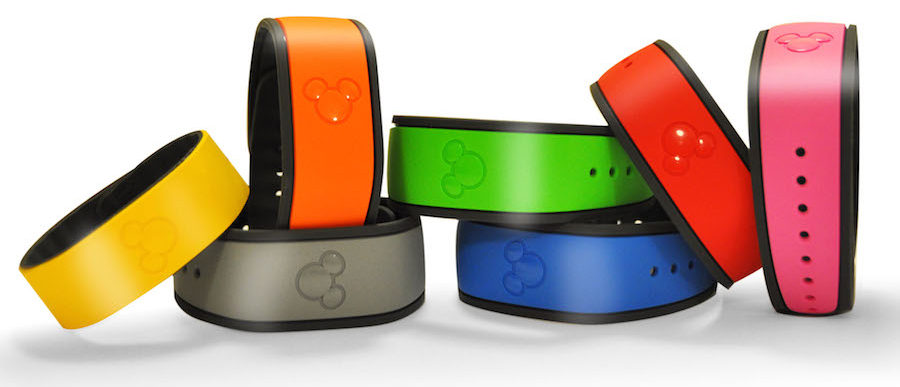
Taking up residence in the Miniaturized Exploration Technologies laboratory at Epcot (eh hem… The vacated remains of the Lost Legend: Body Wars) Disney’s team got to work on developing a bracelet equipped with an RFID tag. RFID (Radio-frequency identification) is a communication technology consisting of a tiny radio transponder – smaller than a grain of rice – which, when triggered by a nearby RFID reader’s electromagnetic pulse, transmits an identifying number back to the receiver.
RFID can work in two ways. Passive tags have no internal power source whatsoever, merely being activated and energized by the RFID reader’s interrogating radio waves. Active tags are battery powered and thus can transmit their own signals over great distances (up to football field length), actively relaying data outward to be read.
A-ha! As the Passholder-exclusive text and drawings from Disney’s patent reveals:
Now here was an answer to one piece of Disney World’s complexity and friction. Rather than carrying a park ticket, room key, cash, credit card, FastPass return slips, and PhotoPass card, a centralized, randomized ID could unite all of Disney’s dissimilar services and systems and associate them with one guest in the form of a low-cost, low-power wearable. The xBand was born. According to FastCompany, upon testing out a jerry-rigged Velcro mock-up inside the Body Wars lab, Iger reportedly said, “This little thing is going to be special. If I gave you more money, could I have it faster?”
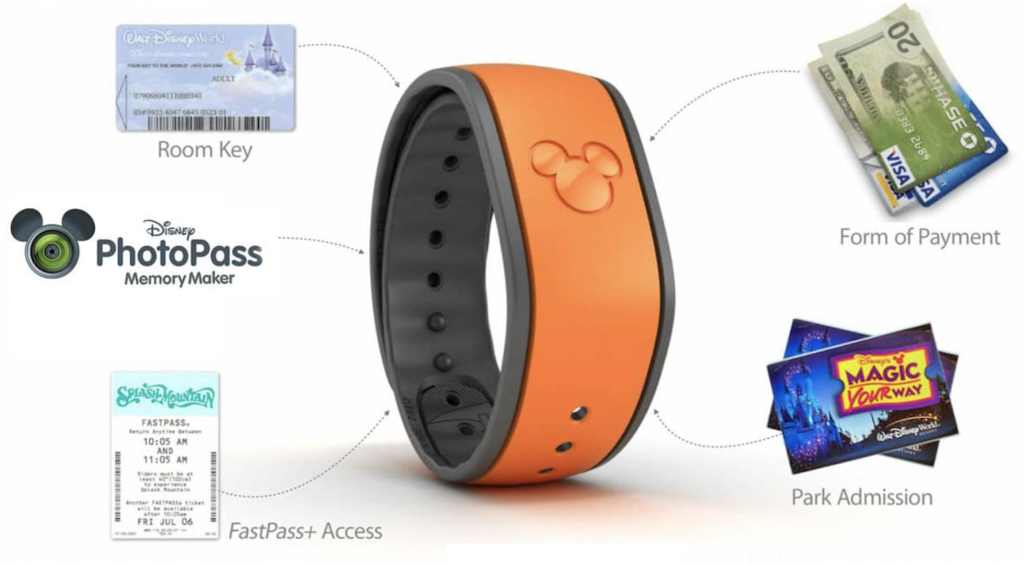
Disney signed on the San Francisco-based design company Frog to mastermind the creation of the xBand’s final form – the MagicBand – and began to parse out the industrial-organizational psychology that would make it worthwhile.
You can imagine how, in theory, the MagicBand would be a both a smooth complement to – and yet a major disruptor of – business-as-usual at Walt Disney World. And at least early on, its ambitious possibilities appeared endless.
If a MagicBand’s internal, practically-powerless RFID chip could be associated with a guest’s unique, numerical identifier tag, then short-range, passive RFID receivers could be activated with a “tap,” turning the wearable into a guest’s park ticket, room key, reservation, FastPass, and identifier, all in one. Not to mention, research has clearly shown that paying via touchless technology ups guest spending (since it removes the psychological pain of a cash transaction or even a card swipe-and-sign, keeping the ‘total’ out of sight and out of mind), and loosened purse strings meant the MagicBand could pay for itself.
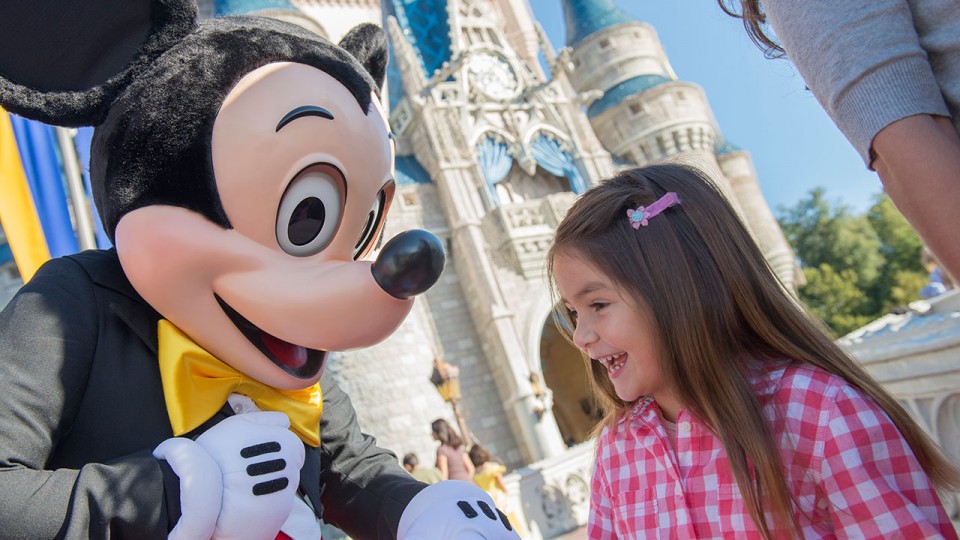

But the capabilities of the MagicBand went well beyond petty cash. Long range, active RFID sensors installed throughout Disney’s theme parks could wirelessly, digitally track crowd flow. Theoretically, by tracking anonymized MagicBands, Disney could gain immediate, live readings of pinch points or overcrowding. In practice, that data could allow an army of traffic controllers to descend at a moment’s notice, or even lead to the instantaneous dispatching of a mini-show or character greeting across the park to balance crowd levels. In that way, MagicBand data could theoretically help schedule Disney World’s 80,000 Cast Members into the 240,000 shifts they inhabit both efficiently and intelligently.
And perhaps more importantly for guests, the MagicBand could literally revolutionize the parks’ forward-facing elements. Imagine tapping your band to gain entry to a park and having the Cast Member at the turnstile hand you a birthday button then and there… Imagine hugging a talking Mickey, who asks how your trip from Ohio was, or how you liked riding Jungle Cruise earlier that morning… Imagine collecting your on-ride photos without so much as a touch, merely having them auto-assigned to you after your ride… Imagine a giant postcard in the first scene of “it’s a small world” welcoming you by name; a screen on your Magical Express return to the airport playing “best of” moments from your trip…
The MagicBand would serve as the visible centerpiece of Disney’s resort-wide reimagining. It was, quite literally, the key… and the ticket… and the credit card. Yet it was still only one piece of a much larger revolution.
MyMagic+
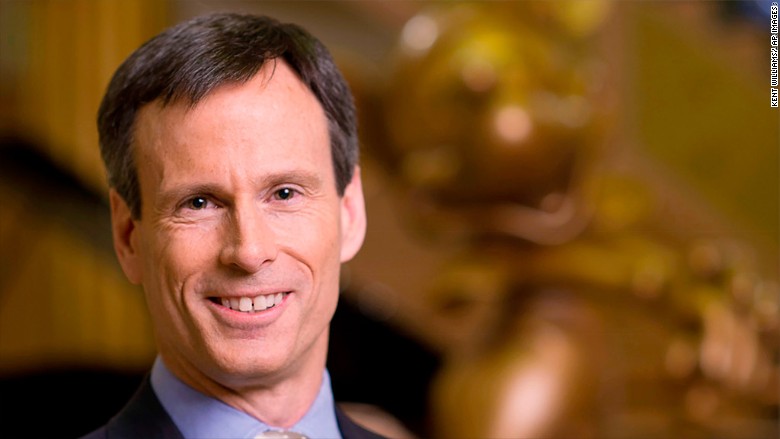
In January 2010, Jay Rasulo – one of the founding executives behind Disney’s Next Generation Experience team – was swapped out with Tom Staggs (above) to become the CFO of the company. Staggs, in turn, took over Disney’s theme parks. (The seemingly random swap was thought to be Iger’s attempt to cross-train the two men, who were considered the top contenders to replace him as CEO.)
Tom Staggs stepped into the NGE project well into development, when its base of operations had moved to an empty soundstage at Disney’s Hollywood Studios. There, a massive “living blueprint” mock-up demonstrated the system’s workflow, from a guest’s initial reservation to their receipt of MagicBands prior to their trip; how Disney’s Magical Express would usher them into the company’s “walled garden” in Florida with MagicBands on-hand, ready to serve as their hotel room keys and ride reservations. James Cameron (of Titanic and AVATAR fame) and Pixar’s John Lasseter reportedly swung by the Studios to see the system in action.
With Iger’s approval, NGE moved forward. In February 2011, Disney approved a $1 billion spend on the project, giving NGE about the same budget as Disney’s five-year overhaul of Disney California Adventure. It was hoped that the new infrastructure roll-out meant to modernize a Walt Disney Vacation would be in place in 12 months’ time, with a February 2012 launch.
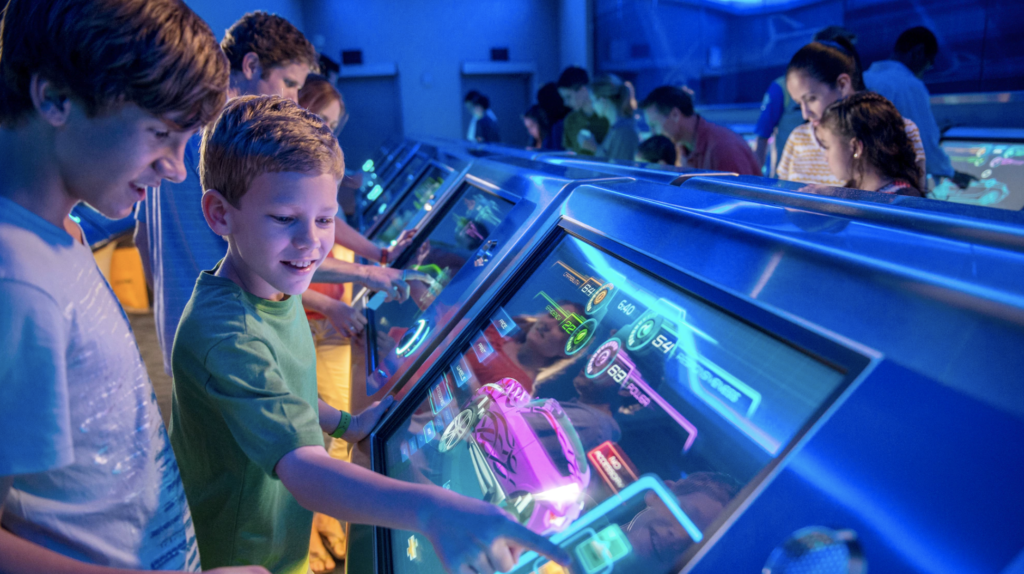
Parts of the project seeped through. When New Fantasyland’s Be Our Guest Restaurant opened in November 2012, food was “magically” delivered by RFID location. That December, a TRON-esque redux of the Lost Legend: Test Track saw RFID cards (later, MagicBands) carry guests’ custom car designs from pre-show to ride to post-show. Then there were the (today, much-maligned) interactive queues, peppering Disney’s dullest legacy lines with splashy games meant to make waiting bearable – at least a part of the next-gen initiative.
But the larger MyMagic+ system wasn’t fully online until 2013, when a Disney Parks Blog post signed by Staggs himself finally pulled back the curtain. That year, much of that billion dollars (and reportedly, more) was spent swapping out the resort’s 28,000 hotel room doors with RFID door handles (120 a day for eight months without hampering occupancy), retrofitting 283 park entry turnstiles and tens of thousands of cash registers with RFID readers, equipping the San Francisco-sized property with 30 million square feet of WiFi, building hundreds of FastPass+ RFID touch point poles, training 70,000 Cast Members equipped with 6,000 RFID-enabled wireless devices, and adding dozens of guest-accessible computer stations throughout the four theme parks…

The MyMagic+ initiative was “officially” launched on December 1, 2013 – nearly two years after its planned debut. By then, it’s estimated that 56% of Americans had a smartphone – 120 million more people than had when the NGE project first launched in 2008…
MyMagic+ had been Disney’s billion-dollar gamble on the future. It was a massive infrastructure project exceeding the cost of many of Disney’s theme park builds! And when it launched, it really did revolutionize Disney World… but, maybe not in the way Disney had hoped. On the last page, we’ll dissect the remnants of this tech infrastructure to see what remains, and how that darn “great, big, beautiful tomorrow” yet again trounced Disney’s attempts to forecast the future.




